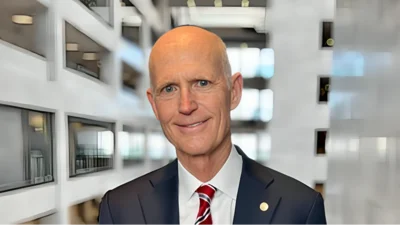The Congressional Record is a unique source of public documentation. It started in 1873, documenting nearly all the major and minor policies being discussed and debated.
“SOCIAL SECURITY” mentioning the Federal Reserve System was published in the House of Representatives section on pages H4970 on June 23, 1998.
The publication is reproduced in full below:
SOCIAL SECURITY
The SPEAKER pro tempore. Under the Speaker's announced policy of January 21, 1997, the gentleman from Michigan (Mr. Smith) is recognized during morning hour debates for 4 minutes.
Mr. SMITH of Michigan. Mr. Speaker, the gentleman from Minnesota (Mr. Minge), a Member of Congress, and I have introduced a bill, H.R. 4033, that deals with some of the mistakes I think that we have been making regarding Social Security and how we calculate and how we treat the money that government borrows from Social Security, that we borrow from the Social Security Trust Fund, and then spend that money on other programs.
The legislation accomplishes two objectives. First of all, we say that from now on, when the general fund or the government borrows from the Social Security Trust Fund, instead of the blank IOUs, in the future it will be required that we have marketable Treasury bills.
{time} 0945
Right now what happens is when there is a surplus coming in from Social Security, and Social Security is a pay-as-you-go program, so existing workers pay in their Social Security tax, immediately that is sent out to existing retirees. Anytime there are more revenues coming in than what is paid out in benefits, it goes into what is called the Social Security trust fund. It is not really a trust fund, though. It is simply considered and treated as additional revenue for the general fund to spend on other social programs.
Number one, what we say in this legislation and what we are proposing is that these become marketable treasury bills that the Social Security trustees can walk around to the corner, to the nearest bank, anyplace, and if they need that money to pay benefits, they can do it without coming and begging to Congress to pay back the money that has been borrowed.
The second thing that we do in that bill is say that from now on when we talk about deficits and surplus, we are not going to consider the extra money that is coming in from Social Security, that goes into the Social Security trust fund and is spent on other programs, as revenue in terms of deciding whether we have got a deficit or surplus in this country. Right now we hear a lot of bragging about the fact that we are going to have a surplus, a surplus in the unified budget that might be as high as $60 billion, $70 billion this year, maybe up to $100 billion next year. But because we are borrowing that $70 billion to $100 billion next year from the Social Security trust fund, it is not really a surplus.
So we say from now on, when OMB and CBO scores whether or not we have a deficit or surplus, we are not going to consider the amount that we borrow from the Social Security trust fund as revenue in terms of pretending that we really have a surplus in this country. I think it is important that we be visible.
I have got a letter from Chairman Allen Greenspan, Chairman of the Fed, that says, ``Look, what's important is that we have transparency, that there is a clear understanding of what is happening in this country.''
I suggest, Mr. Speaker, and I suggest to the American people that there is not a clear understanding as we brag about a surplus when we are depending on the amount that we are borrowing from the Social Security trust fund as revenue to justify in our calculations that there really is a surplus.
I just quote from Allen Greenspan:
On the first issue, my basic point would be that the financial markets of switching from investments in nonmarketable to marketable treasuries have little or no effect.
It is important that we be transparent, it is important that we be honest with ourselves in the way we calculate these surpluses so that we can make real and honest policy decisions.
Federal Reserve System,
Board of Governors,
Washington, DC, June 18, 1998.Hon. Nick Smith,House of Representatives, Washington, DC.
Dear Congressman: I am pleased to respond to your request for my thoughts on the bill you have drafted, H.R. 4033, which would direct the investment of social security trust funds to marketable securities and require that budget surpluses or deficits be reported net of social security flows.
On the first issue, my basic point would be that the financial market effects of switching from investments in nonmarketable to marketable Treasury securities should not be significant. The crux of this matter is that it is the net borrowing requirements of the federal government, on a consolidated basis that encompasses the trust funds, that are key in terms of pressures in financial markets. If the trust funds were simply to purchase marketable rather than nonmarketable securities, the net borrowing from the public would remain the same. Under the circumstances, the question would seem to boil down to a matter of which approach is most attractive in terms of dealing with the technical problems of public debt management.
The preceding remarks effectively anticipate what I would have to say about the second issue regarding accounting. A unified budget concept that encompasses the net flows into or out of the trust funds most effectively captures the short-run influence of the government's fiscal activities on the financial markets and the economy. From this standpoint, it would not be desirable, to my mind, to suppress the unified accounts. On the other hand, a budget accounting that separates out social security receipts and outlays may provide an insight into the longer-term financial condition of the federal government that would be helpful in the planning and policymaking process. As with many issues in accounting, the one-size-fits-all approach is likely to be suboptimal. What is important is that the relevant information be presented in as transparent a fashion as possible, so that eveyone can appreciate the financial consequences of policy actions.
I hope that these comments are helpful. Please let me know if I can be of further assistance.
Sincerely,
Alan Greenspan,Chairman.
____________________








